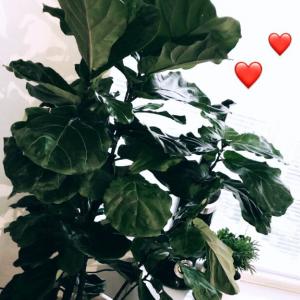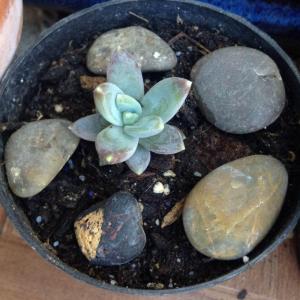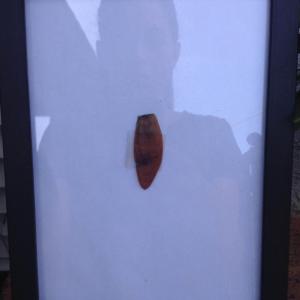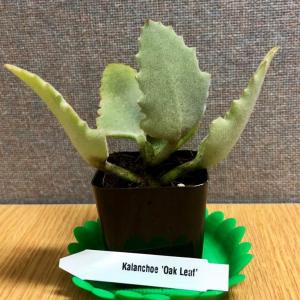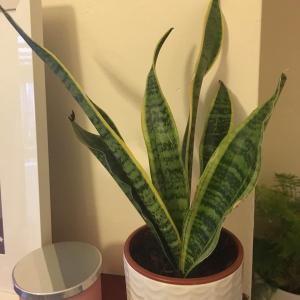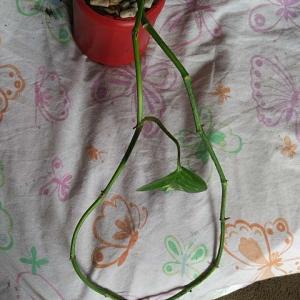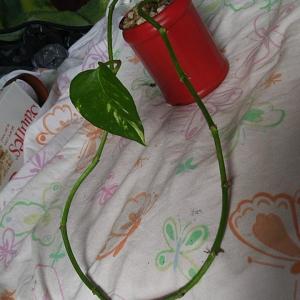文章
Miss Chen
2018年03月31日

Description: This perennial wildflower consists of a rosette of basal leaves spanning ½-1' across and a more or less erect flowering stalk about ¾-2' tall. The basal leaves are 3-6" long (including the petioles). The leaf blades are oval, obovate, or orbicular in shape with dentate-crenate margins; they are medium green and glabrous. The petioles are light green to dull purple and as long as the blades; sometimes they are slightly winged and/or cobwebby-pubescent. The flowering stalk is light green to dull purple and terete; it may have some cobwebby pubescence toward the base, otherwise it is glabrous. About 2-3 alternate leaves occur along the stalk that are up ¾-2½" long; they are usually elliptic-pinnatifid or oblong-pinnatifid in shape with ragged lobes. The stalk terminates in a flat-headed panicle (or compound corymb) of flowerheads. Individual flowerheads are ½-¾" across. Each flowerhead has 8-16 ray florets that surround numerous disk florets in the center. The petaloid extensions of the ray florets are yellow, while the disk florets are orange-yellow. At the base of each flowerhead, there are light green bracts (phyllaries) in a single series that are linear-lanceolate. The blooming period occurs during late spring and lasts about 3 weeks. During the summer, both ray and disk florets are replaced by bullet-shaped achenes (about 2-3 mm. in length) with tufts of white hair. The achenes are distributed by the wind. The root system is fibrous, producing vegetative offsets from either rhizomes or stolons. At favorable sites, small colonies of plants occasionally develop.

Cultivation: The preference is moist to dry-mesic conditions, full to partial sunlight, and soil containing loam, sand, or rocky material.
Range & Habitat: The native Spoon-Leaved Ragwort is found in east-central Illinois and scattered areas elsewhere within the state, where it is rare (see Distribution Map). Illinois lies along the western range-limit for this species; it is more common further to the east. Habitats include rocky upland woodlands, edges of bluffs, limestone glades, loamy savannas, and sandy savannas. Occasional disturbance is beneficial if it reduces competition from woody vegetation.
Faunal Associations: The nectar and pollen of the flowerheads attract cuckoo bees (Nomada spp.), Halictid bees (Augochlorella spp., Halictus spp., Lasioglossum spp.), Andrenid bees (Andrena spp.), Syrphid flies, Tachinid flies, and miscellaneous beetles. One bee species, Andrena gardineri, is a specialist pollinator (oligolege) of Packera spp. (ragworts). Another insect, Neacoryphus bicrucis (White-Crossed Seed Bug), feeds on the seeds of these plants, while the caterpillars of an uncommon butterfly, Calephelis borealis (Northern Metalmark), feed on the foliage of Spoon-Leaved Ragwort in particular. The foliage of this and other ragworts is toxic to many mammalian herbivores, although sheep are more tolerant of it (Georgia, 1913).
Photographic Location: A wildflower garden at Kitty Todd Nature Preserve in NW Ohio.
Comments: The different species of ragwort are distinguished from each other by the shape of their basal leaves and hairiness of individual plants. Spoon-Leaved Ragwort (Packera obovata) resembles Golden Ragwort (Packera aurea), except its leaves are not indented (cordate) where the petioles join the blades. It is also more likely to have narrowly winged petioles than the latter species. Spoon-Leaved Ragwort also resembles Prairie Ragwort (Packera plattensis), except it lacks the abundant cobwebby and mealy hairs of the latter during the blooming period. Spoon-Leaved Ragwort often has some cobwebby hairs toward the base of its stems and along its petioles, but not to the same extent as Prairie Ragwort. In addition, plants of the latter species are usually smaller in size. A scientific synonym of Spoon-leaved Ragwort is Senecio obovatus.

Cultivation: The preference is moist to dry-mesic conditions, full to partial sunlight, and soil containing loam, sand, or rocky material.
Range & Habitat: The native Spoon-Leaved Ragwort is found in east-central Illinois and scattered areas elsewhere within the state, where it is rare (see Distribution Map). Illinois lies along the western range-limit for this species; it is more common further to the east. Habitats include rocky upland woodlands, edges of bluffs, limestone glades, loamy savannas, and sandy savannas. Occasional disturbance is beneficial if it reduces competition from woody vegetation.
Faunal Associations: The nectar and pollen of the flowerheads attract cuckoo bees (Nomada spp.), Halictid bees (Augochlorella spp., Halictus spp., Lasioglossum spp.), Andrenid bees (Andrena spp.), Syrphid flies, Tachinid flies, and miscellaneous beetles. One bee species, Andrena gardineri, is a specialist pollinator (oligolege) of Packera spp. (ragworts). Another insect, Neacoryphus bicrucis (White-Crossed Seed Bug), feeds on the seeds of these plants, while the caterpillars of an uncommon butterfly, Calephelis borealis (Northern Metalmark), feed on the foliage of Spoon-Leaved Ragwort in particular. The foliage of this and other ragworts is toxic to many mammalian herbivores, although sheep are more tolerant of it (Georgia, 1913).
Photographic Location: A wildflower garden at Kitty Todd Nature Preserve in NW Ohio.
Comments: The different species of ragwort are distinguished from each other by the shape of their basal leaves and hairiness of individual plants. Spoon-Leaved Ragwort (Packera obovata) resembles Golden Ragwort (Packera aurea), except its leaves are not indented (cordate) where the petioles join the blades. It is also more likely to have narrowly winged petioles than the latter species. Spoon-Leaved Ragwort also resembles Prairie Ragwort (Packera plattensis), except it lacks the abundant cobwebby and mealy hairs of the latter during the blooming period. Spoon-Leaved Ragwort often has some cobwebby hairs toward the base of its stems and along its petioles, but not to the same extent as Prairie Ragwort. In addition, plants of the latter species are usually smaller in size. A scientific synonym of Spoon-leaved Ragwort is Senecio obovatus.
0
0
文章
Miss Chen
2018年03月29日

Description: This perennial plant is 1½–3' tall and largely unbranched, except for several flowering stems toward the apex. The stems are covered with long white hairs. The alternate compound leaves are trifoliate. Each compound leaf has a short hairy petiole with a pair of narrow stipules about 1/10" (2.5 mm.) long at its base. The individual leaflets are up to 2" long and 1½" across. They are oval, oval-orbiculate, or obovate, and have smooth margins. Their upper surface is finely pubescent, while their lower surface is softly hairy. The upper stems terminate in rather short spike-like racemes of flowers about 1-3" long. The hairy flowering stalks (peduncles) are often longer than either the leaflets or the inflorescence. The spike-like racemes have whorls of flowers that are densely crowded together. Each flower is about 1/3" (8 mm.) long and cream-colored, usually with a purple spot at the base. It has a typical pea-like flower structure, consisting of a standard and keel. The calyx lobes are longer than the flowers. They are hairy, narrow, and taper to a sharp point, turning brown with maturity. This species of bush clover rarely produces cleistogamous flowers. The blooming period occurs during the late summer and lasts about 3 weeks. There is no noticeable floral scent. Each flower is replaced by a seedpod that is short, flat-sided, and pubescent, with its outer tip consisting of a short beak. This seedpod is about the same length or shorter than the calyx lobes. The root system consists of a taproot. This plant spreads by reseeding itself.
Cultivation: The preference is partial sun, mesic to dry conditions, and an acid soil containing sand or rocky material. Full sunlight or light shade, and more fertile soil are also tolerated. Hairy Bush Clover fixes nitrogen in the soil.
Range & Habitat: This species has an odd bifurcated distribution, occurring in NE and southern Illinois, but hardly anywhere else in the state (see Distribution Map). Hairy Bush Clover is an occasional plant in these areas, where it is native. Habitats include upland oak woodland that are rocky or sandy, oak savannas that are rocky or sandy, and sandstone glades. In NE Illinois, this species occurs in sandy areas that are dominated by Black Oaks, while in southern Illinois it occurs in areas that are hilly and rocky. Occasional wildfires are probably beneficial to this species as this opens up the forest canopy.
Faunal Associations: The flowers attract bees primarily, including bumblebees, Leaf-Cutting bees, and Halictid bees. The short-tongued bee Calliopsis andreniformis often visits the flowers of Lespedeza spp. Butterflies may visit the flowers for nectar, but they are non-pollinating. The foliage is eaten by the caterpillars of various skippers and moths. This includes such skipper species as Thorybes pylades (Northern Cloudywing), Thorybes bathyllus (Southern Cloudywing), and Epargyreus clarus (Silver-Spotted Skipper), and such moth species as Utetheisa bella (Bella Moth), Ptichodis herbarum (Common Ptichodis), and Dasylopha anguina (Black-Spotted Prominent). The seeds are eaten by the Bobwhite Quail and Wild Turkey, while the foliage is eaten by the Cottontail Rabbit and White-Tailed Deer. The foliage is non-toxic and highly palatable to mammalian herbivores.

Photographic Location: The photos were taken at a sandy savanna and a sandy path of the Hooper Branch Savanna Nature Preserve in Iroquois County, Illinois. The dominant tree in this area is Quercus velutina (Black Oak).
Comments: Hairy Bush Clover is one of several Lespedeza spp. that occur in Oak woodlands or savannas. This species is not very showy as the small flowers are partially hidden by the long calyx lobes. It can be distinguished from these other species by its cream-colored flowers, unusually broad leaves, and very hairy stems. A distinguishing characteristic are the long peduncles, which are often longer than the leaflets and spike-like racemes. This can be readily observed in the photographs. Other bush clovers, such as Lespedeza capitata (Round-Headed Bush Clover), usually have shorter peduncles.
Cultivation: The preference is partial sun, mesic to dry conditions, and an acid soil containing sand or rocky material. Full sunlight or light shade, and more fertile soil are also tolerated. Hairy Bush Clover fixes nitrogen in the soil.
Range & Habitat: This species has an odd bifurcated distribution, occurring in NE and southern Illinois, but hardly anywhere else in the state (see Distribution Map). Hairy Bush Clover is an occasional plant in these areas, where it is native. Habitats include upland oak woodland that are rocky or sandy, oak savannas that are rocky or sandy, and sandstone glades. In NE Illinois, this species occurs in sandy areas that are dominated by Black Oaks, while in southern Illinois it occurs in areas that are hilly and rocky. Occasional wildfires are probably beneficial to this species as this opens up the forest canopy.
Faunal Associations: The flowers attract bees primarily, including bumblebees, Leaf-Cutting bees, and Halictid bees. The short-tongued bee Calliopsis andreniformis often visits the flowers of Lespedeza spp. Butterflies may visit the flowers for nectar, but they are non-pollinating. The foliage is eaten by the caterpillars of various skippers and moths. This includes such skipper species as Thorybes pylades (Northern Cloudywing), Thorybes bathyllus (Southern Cloudywing), and Epargyreus clarus (Silver-Spotted Skipper), and such moth species as Utetheisa bella (Bella Moth), Ptichodis herbarum (Common Ptichodis), and Dasylopha anguina (Black-Spotted Prominent). The seeds are eaten by the Bobwhite Quail and Wild Turkey, while the foliage is eaten by the Cottontail Rabbit and White-Tailed Deer. The foliage is non-toxic and highly palatable to mammalian herbivores.

Photographic Location: The photos were taken at a sandy savanna and a sandy path of the Hooper Branch Savanna Nature Preserve in Iroquois County, Illinois. The dominant tree in this area is Quercus velutina (Black Oak).
Comments: Hairy Bush Clover is one of several Lespedeza spp. that occur in Oak woodlands or savannas. This species is not very showy as the small flowers are partially hidden by the long calyx lobes. It can be distinguished from these other species by its cream-colored flowers, unusually broad leaves, and very hairy stems. A distinguishing characteristic are the long peduncles, which are often longer than the leaflets and spike-like racemes. This can be readily observed in the photographs. Other bush clovers, such as Lespedeza capitata (Round-Headed Bush Clover), usually have shorter peduncles.
0
0
文章
Miss Chen
2018年03月19日

Description: This wildflower is an annual or biennial about ½–2' tall. Small plants are unbranched or sparingly branched, while large plants form frequent lateral stems in the upper leaf axils. The stems are light green to reddish purple, 4-angular, and slightly winged; the central stem is erect, while the lateral stems curve upward. Pairs of opposite leaves occur along each stem, each pair rotating about 90° from the pair of leaves immediately below. The leaves are up to 2½" long and about half as much across, becoming slightly smaller as they ascend the stems. The leaves are ovate-cordate to ovate, sessile or slightly clasping at their bases, and smooth along their margins. Their upper surfaces are yellowish green, green, or tinted slightly purple; each leaf has 3-5 parallel veins. Both the stems and leaves are hairless.
The central stem and upper lateral stems (if present) terminate in clusters of 3-7 flowers on short pedicels. Frequently, there are additional clusters of 1-5 flowers from the axils of the upper leaves. All of these flowers are held stiffly erect. Each flower is about ¾" long and ¼" across; it has a long tubular corolla and a short green calyx with 5 slender teeth. The apex of each corolla has 5 triangular lobes that fold together to form a point; the corolla is closed or nearly so. There are no interconnecting fringes to join these lobes. The corollas are blue-violet, purple, or nearly white; they have fine purple veins along their sides. Inside each corolla, there are five stamens and a pistil. The erect lobes of the calyx are narrowly oblong-lanceolate in shape. Underneath the clustered flowers, the leaves are reduced to leafy bracts. The blooming period occur from late summer to mid-fall and lasts about 1-2 months. There is no noticeable floral scent. Each flower is replaced by a seed capsule that dividesDistribution Map into 2 parts to release the numerous tiny seeds. These seeds are distributed by wind and water. The root system consists of a taproot. This wildflower reproduces by reseeding itself; it does not spread vegetatively.
Cultivation: The preference is full sun to light shade, moist to dry conditions, and a somewhat barren soil containing clay or rocky material. Competition from taller plants should be restricted. The size of individual plants and the abundance of their flowers can vary considerably depending on the availability of moisture and nutrients.
Range & Habitat: The native Stiff Gentian is occasional in the northern half of Illinois, while in the southern half of the state it is rare or absent. Populations of this species may be declining. Habitats include hill prairies, upland savannas, thinly wooded slopes, rocky meadows, banks of streams in wooded areas, calcareous seeps, and edges of cliffs. This species is usually found in high quality natural habitats, often where limestone is close to the ground surface.
Faunal Associations: So far, information about floral-faunal relationships for this species has not been encountered. The long tubular shape of the closed corollas suggests that long-tongued bees cross-pollinate the flowers.
Photographic Location: The edge of a partially shaded cliff at the Pine Hills Nature Preserve in west-central Indiana.
Comments: Like several other gentian species, the flowers of Stiff Gentian provide attractive blue-violet color during the fall; this is one of the last species to remain in bloom. Stiff Gentian in Illinois consists of var. occidentalis; the typical variety is found east of Ohio. Stiff Gentian is easily distinguished by its peculiar flowers, which are shorter (1" long or less) and more narrow (¼" across) than the flowers of other gentians with closed corollas. Sometimes, Stiff Gentian is still referred to as Gentiana quinquefolia, but this genus has been reserved for the perennial gentians, of which there are several species still extant in Illinois.
The central stem and upper lateral stems (if present) terminate in clusters of 3-7 flowers on short pedicels. Frequently, there are additional clusters of 1-5 flowers from the axils of the upper leaves. All of these flowers are held stiffly erect. Each flower is about ¾" long and ¼" across; it has a long tubular corolla and a short green calyx with 5 slender teeth. The apex of each corolla has 5 triangular lobes that fold together to form a point; the corolla is closed or nearly so. There are no interconnecting fringes to join these lobes. The corollas are blue-violet, purple, or nearly white; they have fine purple veins along their sides. Inside each corolla, there are five stamens and a pistil. The erect lobes of the calyx are narrowly oblong-lanceolate in shape. Underneath the clustered flowers, the leaves are reduced to leafy bracts. The blooming period occur from late summer to mid-fall and lasts about 1-2 months. There is no noticeable floral scent. Each flower is replaced by a seed capsule that dividesDistribution Map into 2 parts to release the numerous tiny seeds. These seeds are distributed by wind and water. The root system consists of a taproot. This wildflower reproduces by reseeding itself; it does not spread vegetatively.
Cultivation: The preference is full sun to light shade, moist to dry conditions, and a somewhat barren soil containing clay or rocky material. Competition from taller plants should be restricted. The size of individual plants and the abundance of their flowers can vary considerably depending on the availability of moisture and nutrients.
Range & Habitat: The native Stiff Gentian is occasional in the northern half of Illinois, while in the southern half of the state it is rare or absent. Populations of this species may be declining. Habitats include hill prairies, upland savannas, thinly wooded slopes, rocky meadows, banks of streams in wooded areas, calcareous seeps, and edges of cliffs. This species is usually found in high quality natural habitats, often where limestone is close to the ground surface.
Faunal Associations: So far, information about floral-faunal relationships for this species has not been encountered. The long tubular shape of the closed corollas suggests that long-tongued bees cross-pollinate the flowers.
Photographic Location: The edge of a partially shaded cliff at the Pine Hills Nature Preserve in west-central Indiana.
Comments: Like several other gentian species, the flowers of Stiff Gentian provide attractive blue-violet color during the fall; this is one of the last species to remain in bloom. Stiff Gentian in Illinois consists of var. occidentalis; the typical variety is found east of Ohio. Stiff Gentian is easily distinguished by its peculiar flowers, which are shorter (1" long or less) and more narrow (¼" across) than the flowers of other gentians with closed corollas. Sometimes, Stiff Gentian is still referred to as Gentiana quinquefolia, but this genus has been reserved for the perennial gentians, of which there are several species still extant in Illinois.
0
0
成长记
cclecombe
2018年03月07日

Finally a new leaf is on the way!


2
0
Mohamad.hamidizade:@cclecombe this is good plant 💪🏼
cclecombe:@Mohamad.hamidizade I can’t really help there! I bought this plant as a baby
Mohamad.hamidizade:After reproduction of the mother plant of ficus how many make sprout from new stems?
Mohamad.hamidizade:👏🏼👏🏼
文章
Miss Chen
2018年02月28日

Description: This herbaceous perennial plant is 4-7' tall and little branched, except for a few stems developing from the middle to upper leaf axils. The central stem is light green, glabrous, 4-angled, and strongly winged. The opposite leaves are up to 6" long and 3" across, while their petioles are up to 2" long. The leaves are lanceolate-ovate or cordate-ovate, medium to dark green, and hairless or nearly so; their margins are coarsely serrated. At the apex of a plant, young vegetation may be slightly pubescent. The central stem and major secondary stems terminate in individual spikes of flowers. Each spike is about 4-16" long and ¾–1" across; the length of each spike is highly variable depending on the size of each plant and its maturity. The flowers are densely crowded together all around the spike, although only a few flowers are in bloom at the same time. Each flower consists of a tubular corolla about 1/3" (8 mm.) long and a tubular calyx about 1/4" (6 mm.) long. The pale yellow corolla has 2 upper lobes, 2 lateral lobes, and a single lower lobe that is the largest in size. These lobes are short and rounded. The light green calyx has 5 teeth and several veins along its sides; it is hairless or mostly hairless. Each flower has 4 stamens that are strongly exerted from the corolla and a divided style. The blooming period occurs from mid-summer to early fall and lasts 1-2 months. Individual flowers are short-lived. At maturity, each flower is replaced by 4 nutlets. The root system is fibrous and rhizomatous. Clonal colonies are often produced from the rhizomes.
Cultivation: The preference is light shade to partial sun, moist to mesic conditions, and a fertile loamy soil. This plant dislikes dry sunny areas, which will cause the foliage to wilt during a summer drought.
Range & Habitat: The native Yellow Giant Hyssop is occasional to locally common in most areas of Illinois, except in the NW and southern sections of the state, where it is uncommon or absent (see Distribution Map). Habitats include deciduous woodlands, woodland borders and openings, thickets, meadows in wooded areas, and powerline clearances in wooded areas. Occasional disturbance is beneficial if it reduces, but does not eliminate, the shade from canopy trees and other kinds of woody vegetation.
Faunal Associations: The flowers are visited by bees (e.g., honeybees, bumblebees, & Halictid bees), bee flies, and butterflies. These insects suck nectar, although some of the bees may collect pollen. Syrphid flies also visit the flowers to feed on pollen, but they are less effective at cross-pollination. The dense foliage of Yellow Giant Hyssop attracts its fair share of predatory insects, including parasitic wasps, spiders, ladybird beetles, and others. White-Tailed Deer leave the foliage alone because of its bitter taste.

Photographic Location: A powerline clearance at Busey Woods in Urbana, Illinois.
Comments: The pale yellow flowers are not very showy because they seem small in comparison to the rest of the plant and only a few flowers are in bloom at the same time. Thus, the attractiveness of Yellow Giant Hyssop consists primarily of its foliage. Other species in this genus that occur in Illinois are Agastache scrophulariaefolia (Blue Giant Hyssop) and Agastache foeniculum (Anise Hyssop). Blue Giant Hyssop is about the same size as Yellow Giant Hyssop and it has a similar appearance, except that the corolla of its flowers are blue and its stems are pubescent. Anise Hyssop has a shorter stature than the preceding species and its foliage has an anise scent; it also has flowers with blue corollas.
Cultivation: The preference is light shade to partial sun, moist to mesic conditions, and a fertile loamy soil. This plant dislikes dry sunny areas, which will cause the foliage to wilt during a summer drought.
Range & Habitat: The native Yellow Giant Hyssop is occasional to locally common in most areas of Illinois, except in the NW and southern sections of the state, where it is uncommon or absent (see Distribution Map). Habitats include deciduous woodlands, woodland borders and openings, thickets, meadows in wooded areas, and powerline clearances in wooded areas. Occasional disturbance is beneficial if it reduces, but does not eliminate, the shade from canopy trees and other kinds of woody vegetation.
Faunal Associations: The flowers are visited by bees (e.g., honeybees, bumblebees, & Halictid bees), bee flies, and butterflies. These insects suck nectar, although some of the bees may collect pollen. Syrphid flies also visit the flowers to feed on pollen, but they are less effective at cross-pollination. The dense foliage of Yellow Giant Hyssop attracts its fair share of predatory insects, including parasitic wasps, spiders, ladybird beetles, and others. White-Tailed Deer leave the foliage alone because of its bitter taste.

Photographic Location: A powerline clearance at Busey Woods in Urbana, Illinois.
Comments: The pale yellow flowers are not very showy because they seem small in comparison to the rest of the plant and only a few flowers are in bloom at the same time. Thus, the attractiveness of Yellow Giant Hyssop consists primarily of its foliage. Other species in this genus that occur in Illinois are Agastache scrophulariaefolia (Blue Giant Hyssop) and Agastache foeniculum (Anise Hyssop). Blue Giant Hyssop is about the same size as Yellow Giant Hyssop and it has a similar appearance, except that the corolla of its flowers are blue and its stems are pubescent. Anise Hyssop has a shorter stature than the preceding species and its foliage has an anise scent; it also has flowers with blue corollas.
0
0
文章
Miss Chen
2018年02月27日

Description: This perennial plant is 3-6" tall. The individual leaves and flowering stems emerge directly from the rootstock. Each leaf is deeply divided into 3-5 palmate lobes, while a lobe may be further subdivided into 2-3 smaller lobes. The lobes are usually broader toward their tips than at the base of the leaf, and their tips may have 1 or 2 small teeth. A typical leaf is about 1" long and across (excluding the petiole). The petiole of each leaf is rather long and slender. The slender flowering stems are at least as long as the petioles; they are either green or purple. Each stem curves abruptly downward near the flower. The entire plant is hairless, or nearly so. The flowers have 5 petals and 5 sepals; they are ¾–1½" across. The sepals are green, while the petals are pale blue-violet to dark purple-violet. Usually the petals are the same color, although sometimes the upper two petals are dark purple-violet, while the lower three petals are pale blue-violet. Toward the throat of the flower, the lower petal is white with fine violet lines that function as nectar guides. There are no white hairs near the throat. The stamens are a conspicuous golden yellow.
The blooming period is mid- to late spring, and this plant may bloom during the fall. There may be a mild floral scent in some local ecotypes. Unlike other violets, Birdfoot Violet does not produce cleistogamous flowers. The coppery seeds can be ejected several inches from the mother plant. There is a sugary gel on the seeds that attracts ants; these ants often carry these seeds to their nests. The root system consists of a tuberous caudex with long coarse roots. Sometimes rhizomes are produced, forming vegetative offsets.
Cultivation: The preference is full sun and dry conditions. However, a little shade and more moisture is tolerated, if the site is well-drained. The soil should be sandy or rocky to reduce competition from other plants; a somewhat acid pH is preferred. The greatest danger is crown rot from poorly drained, heavy soil. This plant is more difficult to grow than most.

Range & Habitat: The native Birdfoot Violet occurs occasionally in northern Illinois and in counties along the Mississippi River, but it is uncommon or absent elsewhere (see Distribution Map). Habitats include upland areas of black soil prairies, sand prairies, hill prairies, sandstone glades, cherty slopes, thinly wooded bluffs, openings in rocky or sandy forests, sandy Black Oak savannas, and sand dunes near Lake Michigan. This plant is largely restricted to high quality habitats. Fire is a beneficial management tool in areas with trees and shrubs.
Faunal Associations: The flowers attract long-tongued bees, small butterflies, and skippers. Bee visitors during the spring include bumblebees and Anthophorine bees. Compared to other violets, the flowers of this species attracts more butterflies and skippers, which are often held horizontal to the ground (face up) and easier for such insects to land on. The caterpillars of various Fritillary butterflies feed on the foliage and flowers; the caterpillars of Speyeria idalia (Regal Fritillary) may prefer this violet species over others as a food source. As noted above, ants are attracted to the sugary gel on the seeds, and help to distribute them.

Photographic Location: The photograph of the plant with bicolored flowers was taken at a thinly wooded bluff near Kickapoo State Park in Vermilion County, Illinois. The photograph of the plant with pale blue-violet flowers was taken at a sandy savanna in Kankakee County, Illinois. The photograph of the plant with with violet flowers was taken on a sandy wooded hillside at the Indiana Dunes State Park in NW Indiana.
Comments: The photographs show three different color-forms of Birdfoot Violet and they are all beautiful. This violet can be distinguished from other Viola spp. (Violets) by its deeply lobed leaves, the large size of its flowers, and the absence of hairs near the throat of each flower. The common name refers to the appearance of the leaves.
The blooming period is mid- to late spring, and this plant may bloom during the fall. There may be a mild floral scent in some local ecotypes. Unlike other violets, Birdfoot Violet does not produce cleistogamous flowers. The coppery seeds can be ejected several inches from the mother plant. There is a sugary gel on the seeds that attracts ants; these ants often carry these seeds to their nests. The root system consists of a tuberous caudex with long coarse roots. Sometimes rhizomes are produced, forming vegetative offsets.
Cultivation: The preference is full sun and dry conditions. However, a little shade and more moisture is tolerated, if the site is well-drained. The soil should be sandy or rocky to reduce competition from other plants; a somewhat acid pH is preferred. The greatest danger is crown rot from poorly drained, heavy soil. This plant is more difficult to grow than most.

Range & Habitat: The native Birdfoot Violet occurs occasionally in northern Illinois and in counties along the Mississippi River, but it is uncommon or absent elsewhere (see Distribution Map). Habitats include upland areas of black soil prairies, sand prairies, hill prairies, sandstone glades, cherty slopes, thinly wooded bluffs, openings in rocky or sandy forests, sandy Black Oak savannas, and sand dunes near Lake Michigan. This plant is largely restricted to high quality habitats. Fire is a beneficial management tool in areas with trees and shrubs.
Faunal Associations: The flowers attract long-tongued bees, small butterflies, and skippers. Bee visitors during the spring include bumblebees and Anthophorine bees. Compared to other violets, the flowers of this species attracts more butterflies and skippers, which are often held horizontal to the ground (face up) and easier for such insects to land on. The caterpillars of various Fritillary butterflies feed on the foliage and flowers; the caterpillars of Speyeria idalia (Regal Fritillary) may prefer this violet species over others as a food source. As noted above, ants are attracted to the sugary gel on the seeds, and help to distribute them.

Photographic Location: The photograph of the plant with bicolored flowers was taken at a thinly wooded bluff near Kickapoo State Park in Vermilion County, Illinois. The photograph of the plant with pale blue-violet flowers was taken at a sandy savanna in Kankakee County, Illinois. The photograph of the plant with with violet flowers was taken on a sandy wooded hillside at the Indiana Dunes State Park in NW Indiana.
Comments: The photographs show three different color-forms of Birdfoot Violet and they are all beautiful. This violet can be distinguished from other Viola spp. (Violets) by its deeply lobed leaves, the large size of its flowers, and the absence of hairs near the throat of each flower. The common name refers to the appearance of the leaves.
0
0
文章
Miss Chen
2018年02月25日

Description: This perennial wildflower is ½-1½' tall. The erect central stem is light to medium green, terete, glabrous, and usually unbranched. Sheathed leaves with long floppy blades alternate along this stem. The leaf blades are 4-12" long and up to ¾" across; they are medium green, linear-lanceolate, parallel-veined, and mostly glabrous, except for occasional hairs where the blades emerge from the sheaths. The sheaths are glabrous with parallel veins; sometimes they have purple veins.
Flowering Plant
The central stem terminates in an umbel-like cyme of flowers and a pair of large leafy bracts. These bracts have the same characteristics as the alternate leaves, and they are similar in size. The slender pedicels of the flowers are about ½-1" in length; they are light green to purple, glandular-hairy, and rather floppy. Individual flowers are 1-1¼" across, consisting of 3 blue-violet or rose petals, 3 light green sepals with glandular-hairy exteriors, 6 stamens with hairy filaments and yellow anthers, and a pistil. The sepals are lanceolate-ovate, while the petals are ovate-oval; the petals are a little longer than the sepals. The blooming period occurs from late spring to mid-summer and lasts about 1½ months. Usually, only 1-2 flowers are in bloom at the same time. The flowers are usually open only in the morning, except on cloudy days, when they may remain open a little longer. Each flower lasts only a single day and there is no noticeable fragrance. The flowers are replaced by seed capsules about ¼" long that are 3-celled; they are oblongoid-ovoid or oblongoid-obovoid in shape. Eventually, each seed capsule splits open into 3 parts, releasing 2-6 seeds. The seeds are about 2-3 mm. in length, tan or gray, broadly oblongoid, and somewhat flattened; each seed has a heavily ridged outer margin and it is indented along one side with a point in the middle. The root system is fibrous and rhizomatous. This wildflower often spreads vegetatively by means of its rhizomes, forming colonies.

Cultivation: The preference is full sun, dry-mesic conditions, and sandy soil, although it readily adapts to other kinds of soil. On fertile ground, competition from taller plants is poorly tolerated.
Range & Habitat: The native Prairie Spiderwort is an uncommon plant that is found primarily in west-central Illinois (see Distribution Map). It is state-listed as 'threatened.' It is more common in areas further to the west. Habitats include upland sand prairies, hill prairies, barren areas along railroads, and roadside embankments. This wildflower can be found in both disturbed and high quality natural areas, especially where it is sandy.
Faunal Associations: The flowers offer only pollen as a reward to insect visitors. These floral visitors include honeybees, bumblebees, Halictid bees, and Syrphid flies. However, most Syrphid flies are too small to be effective at cross-pollination. The foliage, and sometimes the flowers, of Tradescantia spp. are eaten by such leaf beetles as Lema collaris, Lema longipennis, Oulema cornuta, and Oulema elongata. In sandy habitats, Spharagemon collare (Mottled Sand Grasshopper) also feeds on Prairie Spiderwort. The non-toxic foliage is readily eaten by rabbits and other mammalian herbivores.

Photographic Location: The photographs were taken at the webmaster's wildflower garden in Urbana, Illinois.
Comments: Other common names of Tradescantia bracteata are Long-Bracted Spiderwort and Sticky Spiderwort. Prairie Spiderwort can be distinguished from other Tradescantia spp. in Illinois by its diminutive size (1½' tall or less) and the glandular hairs on its sepals and pedicels. The most similar species in Illinois is Virginia Spiderwort (Tradescantia virginiensis). Virginia Spiderwort is slightly taller 1-2½' than Prairie Spiderwort, and the hairs on its sepals and pedicels are glandless. Another species in this genus, Ohio Spiderwort (Tradescantia ohiensis), lacks hair on its sepals and pedicels, its foliage is more blue-gray, and it is significantly taller (2-3' tall).
Flowering Plant
The central stem terminates in an umbel-like cyme of flowers and a pair of large leafy bracts. These bracts have the same characteristics as the alternate leaves, and they are similar in size. The slender pedicels of the flowers are about ½-1" in length; they are light green to purple, glandular-hairy, and rather floppy. Individual flowers are 1-1¼" across, consisting of 3 blue-violet or rose petals, 3 light green sepals with glandular-hairy exteriors, 6 stamens with hairy filaments and yellow anthers, and a pistil. The sepals are lanceolate-ovate, while the petals are ovate-oval; the petals are a little longer than the sepals. The blooming period occurs from late spring to mid-summer and lasts about 1½ months. Usually, only 1-2 flowers are in bloom at the same time. The flowers are usually open only in the morning, except on cloudy days, when they may remain open a little longer. Each flower lasts only a single day and there is no noticeable fragrance. The flowers are replaced by seed capsules about ¼" long that are 3-celled; they are oblongoid-ovoid or oblongoid-obovoid in shape. Eventually, each seed capsule splits open into 3 parts, releasing 2-6 seeds. The seeds are about 2-3 mm. in length, tan or gray, broadly oblongoid, and somewhat flattened; each seed has a heavily ridged outer margin and it is indented along one side with a point in the middle. The root system is fibrous and rhizomatous. This wildflower often spreads vegetatively by means of its rhizomes, forming colonies.

Cultivation: The preference is full sun, dry-mesic conditions, and sandy soil, although it readily adapts to other kinds of soil. On fertile ground, competition from taller plants is poorly tolerated.
Range & Habitat: The native Prairie Spiderwort is an uncommon plant that is found primarily in west-central Illinois (see Distribution Map). It is state-listed as 'threatened.' It is more common in areas further to the west. Habitats include upland sand prairies, hill prairies, barren areas along railroads, and roadside embankments. This wildflower can be found in both disturbed and high quality natural areas, especially where it is sandy.
Faunal Associations: The flowers offer only pollen as a reward to insect visitors. These floral visitors include honeybees, bumblebees, Halictid bees, and Syrphid flies. However, most Syrphid flies are too small to be effective at cross-pollination. The foliage, and sometimes the flowers, of Tradescantia spp. are eaten by such leaf beetles as Lema collaris, Lema longipennis, Oulema cornuta, and Oulema elongata. In sandy habitats, Spharagemon collare (Mottled Sand Grasshopper) also feeds on Prairie Spiderwort. The non-toxic foliage is readily eaten by rabbits and other mammalian herbivores.

Photographic Location: The photographs were taken at the webmaster's wildflower garden in Urbana, Illinois.
Comments: Other common names of Tradescantia bracteata are Long-Bracted Spiderwort and Sticky Spiderwort. Prairie Spiderwort can be distinguished from other Tradescantia spp. in Illinois by its diminutive size (1½' tall or less) and the glandular hairs on its sepals and pedicels. The most similar species in Illinois is Virginia Spiderwort (Tradescantia virginiensis). Virginia Spiderwort is slightly taller 1-2½' than Prairie Spiderwort, and the hairs on its sepals and pedicels are glandless. Another species in this genus, Ohio Spiderwort (Tradescantia ohiensis), lacks hair on its sepals and pedicels, its foliage is more blue-gray, and it is significantly taller (2-3' tall).
0
0
成长记
cclecombe
2018年02月25日

Starting to look a bit healthier I cant wait for this next leaf to come out!!
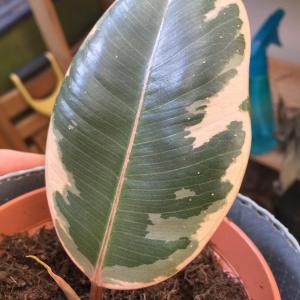

1
0
文章
Miss Chen
2018年02月24日

Description: This perennial plant is 3-7' tall, branching occasionally. The central stem is rather stout, green or reddish purple, and glaucous or slightly pubescent. The alternate leaves are ternately compound: A primary compound leaf divides into 3 secondary compound leaves, while each secondary compound leaf has 3 leaflets. Each leaflet is about ¾–2" long and half as much across. It is rounded at the base, and either unlobed or with 2-3 lobes toward the outer edge (usually a large middle lobe and 2 smaller side lobes). The margin of each leaflet turns downward slightly. The light green or white lower surface has a waxy appearance that is covered with glandular hairs. These hairs will glisten when they are exposed to sunlight. The lower surface of a leaflet also has a reticulated network of conspicuous veins. The foliage, when crushed in the hand, will produce a skunk-like smell.
Female Plant with Immature Fruits
Occasionally, the upper stems will produce panicles of flowers that are up to 2' long and about half as much across. Individual plants are usually unisexual, producing either male or female flowers. A male flower has 4-5 light green sepals that spread outward, while conspicuous white stamens with yellow or brown anthers occupy the center. Each male flower is about 1/3" long. The male flowers usually droop downward from slender pedicels, and together have an airy appearance that is rather pleasant. The female flowers are shaped like small green burs and have numerous short pistils. They are less attractive than the male flowers. The blooming period is from late spring to early summer, and lasts about 3 weeks. There is no floral scent. Pollination is by wind. The flowers are replaced by small achenes that are ribbed and pointed at both ends. The root system has rhizomes, which enables vegetative colonies to form. This plant gradually dies down during the summer, but forms new vegetation at the base during the fall.
Cultivation: The preference is moist to slight dry conditions, and partial to full sun. This plant usually grows in fairly typical garden soil, such as a rich loam or clay loam. The height of a plant can vary considerably depending on fertility of the soil, moisture conditions, and maturity. Vegetative growth is very rapid during the spring. This species of Meadow Rue appears to tolerate full sun and droughty conditions better than most.

Range & Habitat: Waxy Meadow Rue is widely distributed in Illinois, where it is native. This plant occurs occasionally in central and northern Illinois, but it is less common or absent in southern Illinois (see Distribution Map). Habitats include mesic black soil prairies, thickets and woodland borders, savannas, and areas along railroads and roadsides, especially where remnant prairies occur.
Faunal Associations: Because the flowers are wind-pollinated, few insects visit the flowers. Occasionally bees gather pollen from the anthers of the male flowers, while various kinds of beetles eat the pollen. Because the foliage has a foul scent, it probably is not a preferred food source for mammalian herbivores.
Photographic Location: The photographs were taken at the Red Bison Railroad Prairie in Savoy, Illinois. The plants were growing in full sunlight under mesic conditions.

Comments: This plant is reasonably attractive while in bloom, but this doesn't last very long. The various Thalictrum spp. have very similar flowers, but can be distinguished by their foliage. Waxy Meadow Rue has glandular hairs on the undersides of the leaflets (which glisten in the sunlight), and the foliage has a foul scent when it is crushed. Another species, Thalictrum dasycarpum (Purple Meadow Rue), has a very similar appearance, but the hairs on the undersides of the leaflets (if present) are non-glandular, while the foliage has little scent. Either of these plants can occur in prairies. Another species that is fairly common in Illinois, Thalictrum dioicum (Early Meadow Rue), is a shorter plant that blooms earlier and occurs in woodlands. However, the terminal leaflets of this species have 5 lobes toward the outer margin, while the terminal leaflets of Waxy and Purple Meadow Rue have only 3 lobes.
Female Plant with Immature Fruits
Occasionally, the upper stems will produce panicles of flowers that are up to 2' long and about half as much across. Individual plants are usually unisexual, producing either male or female flowers. A male flower has 4-5 light green sepals that spread outward, while conspicuous white stamens with yellow or brown anthers occupy the center. Each male flower is about 1/3" long. The male flowers usually droop downward from slender pedicels, and together have an airy appearance that is rather pleasant. The female flowers are shaped like small green burs and have numerous short pistils. They are less attractive than the male flowers. The blooming period is from late spring to early summer, and lasts about 3 weeks. There is no floral scent. Pollination is by wind. The flowers are replaced by small achenes that are ribbed and pointed at both ends. The root system has rhizomes, which enables vegetative colonies to form. This plant gradually dies down during the summer, but forms new vegetation at the base during the fall.
Cultivation: The preference is moist to slight dry conditions, and partial to full sun. This plant usually grows in fairly typical garden soil, such as a rich loam or clay loam. The height of a plant can vary considerably depending on fertility of the soil, moisture conditions, and maturity. Vegetative growth is very rapid during the spring. This species of Meadow Rue appears to tolerate full sun and droughty conditions better than most.

Range & Habitat: Waxy Meadow Rue is widely distributed in Illinois, where it is native. This plant occurs occasionally in central and northern Illinois, but it is less common or absent in southern Illinois (see Distribution Map). Habitats include mesic black soil prairies, thickets and woodland borders, savannas, and areas along railroads and roadsides, especially where remnant prairies occur.
Faunal Associations: Because the flowers are wind-pollinated, few insects visit the flowers. Occasionally bees gather pollen from the anthers of the male flowers, while various kinds of beetles eat the pollen. Because the foliage has a foul scent, it probably is not a preferred food source for mammalian herbivores.
Photographic Location: The photographs were taken at the Red Bison Railroad Prairie in Savoy, Illinois. The plants were growing in full sunlight under mesic conditions.

Comments: This plant is reasonably attractive while in bloom, but this doesn't last very long. The various Thalictrum spp. have very similar flowers, but can be distinguished by their foliage. Waxy Meadow Rue has glandular hairs on the undersides of the leaflets (which glisten in the sunlight), and the foliage has a foul scent when it is crushed. Another species, Thalictrum dasycarpum (Purple Meadow Rue), has a very similar appearance, but the hairs on the undersides of the leaflets (if present) are non-glandular, while the foliage has little scent. Either of these plants can occur in prairies. Another species that is fairly common in Illinois, Thalictrum dioicum (Early Meadow Rue), is a shorter plant that blooms earlier and occurs in woodlands. However, the terminal leaflets of this species have 5 lobes toward the outer margin, while the terminal leaflets of Waxy and Purple Meadow Rue have only 3 lobes.
0
0



